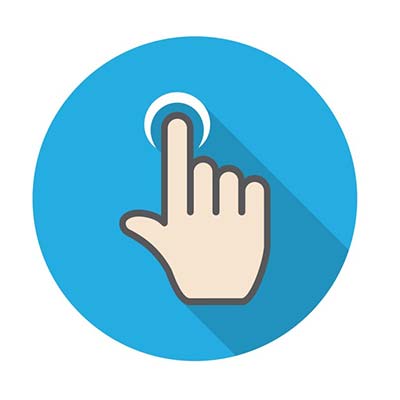
Holidays are a great time to advertise. Because of the emotional context, marketers know people will be especially attracted to holiday-themed ads. Valentine’s Day is no exception: You can almost set your clock to the sudden rush of banners strewn with cheesy hearts, bears and candy kisses.
Banner ads, once clicked, usually evoke the confusion of Alice’s rabbit hole more than the come-what-may optimism of Forrest’s box of chocolates — either way, you don’t know what to expect.
Grabbing attention is tough, and most of us are jaded from past letdowns. So, to work, a banner campaign must direct traffic, showing visitors what they’ll get and why they’ll want it.
Who You Lookin’ At?
One way to get attention is by showing models. TracFone is an example of a company that puts on a human face (albeit a scowling one). Let’s take a look at one of their banners to see how they might improve conversion…
The Valentine’s Day motif grabs attention, as do the girls’ faces, which seem to be looking straight at you. But eye-tracking studies show that we’re drawn to models’ eyes. We end up mesmerized, ignoring the critical parts of the ad.
The folks at TracFone should read Bryan’s post, “How a Pretty Face Can Push Visitors Away.”
Since our attention stays on the faces and eyes, TracFone’s benefits are lost in the background. The all-caps name “XOXOFONE” frames the faces, further keeping the eyes on the upper left-hand side. A simple change in the direction of the eyes to the lower-right side of the ad would direct visitors to the call to action and company logo. (Besides, it might make these girls look like they’re not going to yell at the first guy who invites them to Prom via TracFone.)
Oh, No They Di’int…
From the banner ad, visitors are sent to this busy landing page:
Tracfone presents big, bright red hearts as a marker to connect the visitor. Yet they fail to build persuasive momentum. At this critical stage, the visitor isn’t brought deeper into the buying process. Instead of continuing the scent trail [define] of information, TracFone introduces new information and visuals that create a disconnect with the banner ad it was designed to support.
If TracFone were a Future Now client, here are a few things we’d have them test:
1. Don’t Look at Me! — When using models, make sure the eyes aren’t the focal point. Use an image that directs the visitors’ eyes toward the call to action. Let the copy drive the click.
2. Buy When? — Don’t propose marriage on the first date. There’s almost never enough info on a banner ad to convince someone they should actually “buy now.” Try flirting instead.
3. Consistency is Key — Build on the information and images on the landing page. Help would-be customers make the connection. People will quickly lose momentum to move forward if you present different prices, copy and images than they saw in the ad.
[Editor’s Note: Tired of one-click stands? Sick of hiring gold-diggers who don’t return the investment? Bring home a conversion analysis your CFO would approve of.]
